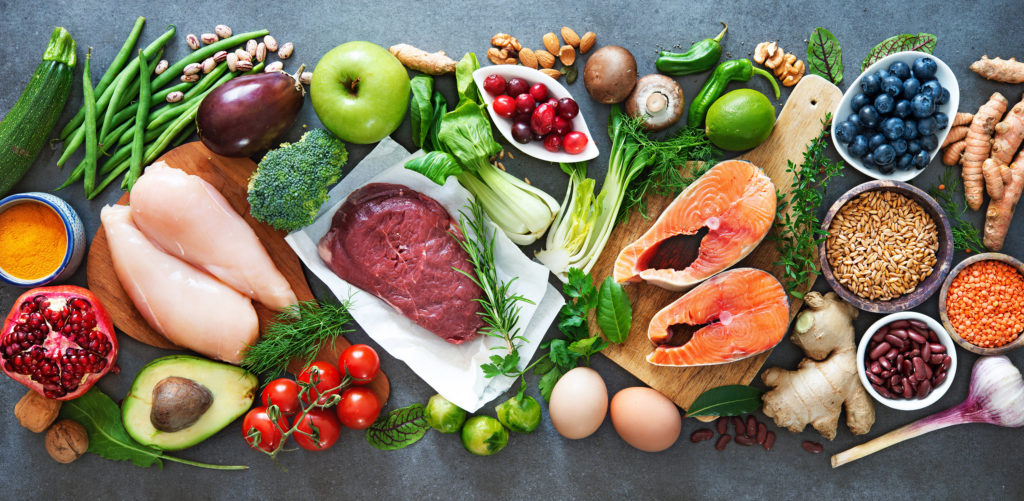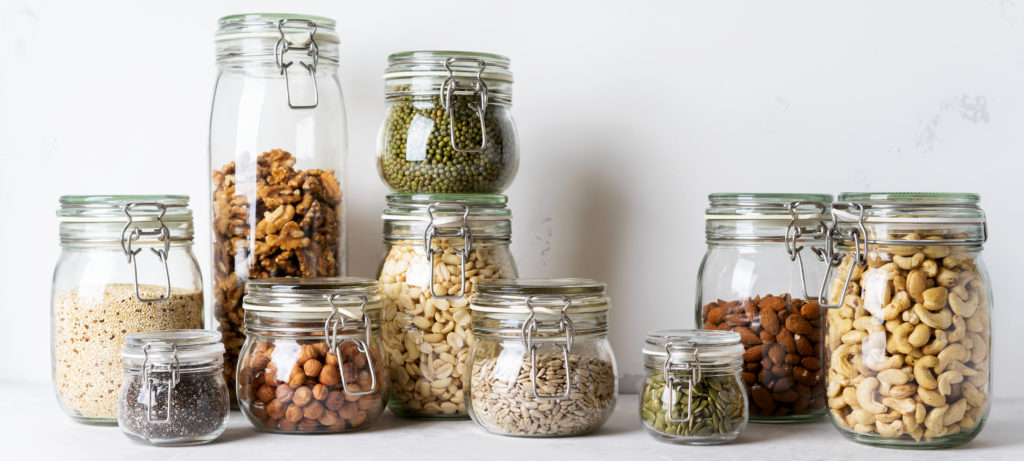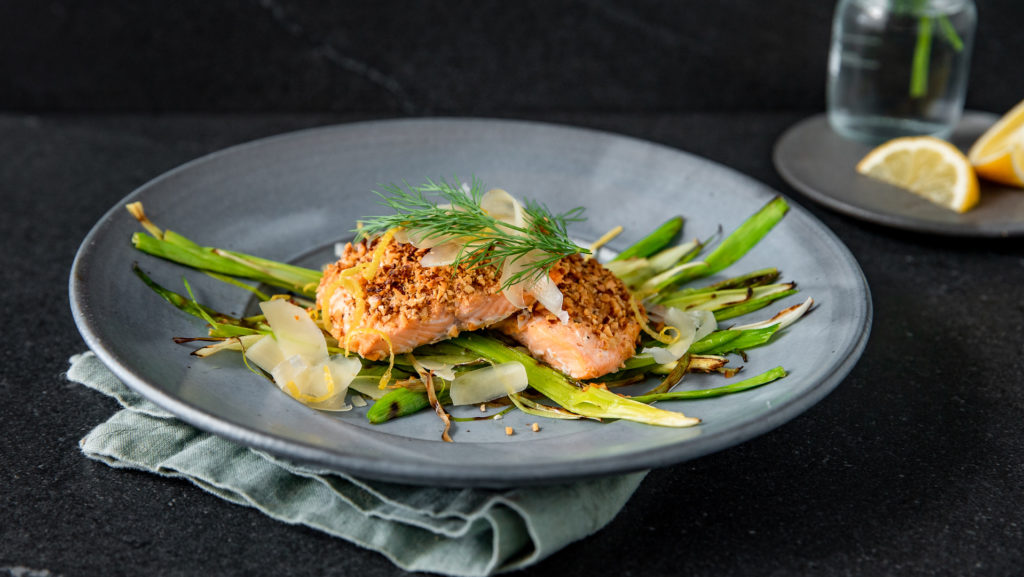The 2025 CrossFit Open begins Thursday, Feb. 27. If you plan to join in the fun this year, now is the time to get ready. In addition to practicing the movements that cause you the most trouble (we all have them!), one of the best actions you can take between now and the announcement of 25.1 is to dial in your nutrition.
What we eat produces cellular and molecular adaptations that have a tremendous impact on our fitness. This means if you want to perform at your best during the Open, your nutrition has to be on point, no matter your goals. Maybe your goal this year is to complete all the workouts, do them all as prescribed for the first time, place high in your division, or to feel great while having fun with your workout buddies. No matter what, focusing on your nutrition is an excellent way to get there.
But where do you start? By far, the most significant benefit to your performance will come from making sure you are eating high-quality, unprocessed foods in the right amounts. Specifically:
"Eat meat and vegetables, nuts and seeds, some fruit, little starch, and no sugar. Keep intake to levels that will support exercise but not body fat."

Without these fundamentals in place, all other nutritional considerations are inconsequential.
Over the next few months, a diet consisting of the proper quantity of whole, unprocessed foods will boost your training in several ways:
-
You'll shed excess body fat, which will increase your capacity in gymnastics movements such as push-ups, pull-ups, and handstand push-ups.
-
You'll have more energy to power through your met-cons, regardless of duration.
-
You'll be able to recover faster, so you can bring more intensity to your workouts more often.
Together, these benefits can markedly improve your level of fitness by February. So, if you aren't implementing this fundamental principle into your nutrition plan, this is your first step. Want to learn more about what and how much to eat? We lay it all out for you in our Nutrition I Course here.
Once you have established the habit of eating high-quality foods in the right amounts, experimenting with meal timing and pre- and post-workout nutrition on game day will help ensure you are primed for your best performance.
Meal Timing
Meal timing addresses your daily requirements for when you eat, how many meals you eat, and how much you eat at each meal. Right now is a great time to tinker with your meal plan to see if a specific method enhances your performance.
-
Do you feel better during your workouts if you eat several smaller meals throughout the day?
-
Do you perform better when eating a couple larger meals or even just one large meal at the end of the day?
-
Is there an eating pattern that enhances your recovery?
No matter which feeding strategy is the best choice for you, the most important thing is to follow this plan as consistently as possible during the Open by eating the same number of meals every day at approximately the same time each day. This consistency is a crucial factor in successfully implementing a diet for performance. The first week of the Open is not the time to switch up the number of meals you eat or test new meal frequencies or sizes.
Pre- and Post-workout Nutrition
A specific component of meal timing involves figuring out when and what to eat around your workout. A simple and practical recommendation for pre- and post-workout nutrition is to eat a well-formulated meal within a three-hour window before your workout and a well-formulated meal within two hours after your workout.
A well-formulated meal includes high-quality, unprocessed foods in the following ratio:
-
40% carbohydrates
-
30% protein
-
30% fat
For CrossFit athletes training once a day, multiple days per week, following these guidelines will not only provide sufficient energy to fuel your workouts but will also optimize your post-workout recovery through increased protein synthesis, glycogen replenishment, and the delivery of necessary micronutrients.
From here, your task is to determine the precise timing and composition of both your pre- and post-workout meals, as these will be highly individualized. For example, some people do best when they eat right before their workout, while others prefer exercising in a fasted state. Research suggests either of these approaches can support performance, so experiment with what works best for you. Consider the following:
-
Do you feel better when you eat a small meal closer to your workout?
-
How close to your workout do you prefer to eat? Right before, three hours before, or somewhere in between?
-
What is the exact composition of your ideal pre-workout meal? Do you like a whole-food meal consisting of meat, fruit, and nuts, or do you do better with a faster-digesting protein shake with some protein powder, milk, and fruit?
These are the questions you should work to answer right now so that once the Open starts, you know exactly what and when you'll need to eat to crush the workouts.
It would be best if you practiced similar experimentation to fine-tune your post-workout nutrition. The post-workout meal might be even more important than what you eat before the workout. There's no doubt that all your post-workout nutritional needs can be satisfied with a quality, whole-foods meal. If this option suits you, you simply need to figure out exactly what foods work best. Steak, asparagus, and a sweet potato with butter? Salmon, rice, and broccoli? A recovery shake containing sufficient protein, carbohydrates, and fat is a good option for those who do not tolerate a full meal after an intense workout. Do you prefer to take in nutrients right after your workout or wait an hour or two before you refuel? Spend a few weeks honing the composition, size, and timing of your post-workout meal so you can maximize your recovery during the Open.

Planning for Success
We've given you some ideas to test out so you can determine your best nutrition strategy for peak performance. However, if you're still not sure what to do, follow these steps:
-
Make sure your diet is made up of quality protein, carbohydrate, and fat sources from whole, unprocessed foods.
-
Determine the amount of food that gives you the energy you need while shedding excess body fat. If you have no idea how to figure this out, start by eating 1 g of protein per pound of body weight per day. Divide this protein total among the number of meals you want to eat each day. Then, round out your carbs and fats so you end up with a macronutrient ratio of 40% carbohydrates, 30% protein, and 30% fat for each meal. Experiment from there with one or a few of the following strategies:
-
Experiment with multiple small meals each day or fewer larger meals.
-
Work out fasted. Then try eating a small meal 120 minutes, 90 minutes, 60 minutes, and 30 minutes before your workout and note what worked best for you.
-
Experiment with the composition of your meals, whether composed of whole foods or shakes.
-
Do the same with your post-workout meal. Try eating immediately after your workout, then one hour post-workout, then two hours post-workout. Try a whole-foods meal or shake and note the difference in how you feel and perform.
-
Follow any specific strategy you're testing for a couple weeks. Observe how you feel and perform during your workouts and how you feel after the workout and the next day. This will help you fine-tune your approach until you determine the specific plan for your 2024 Open. Taking on the Open with your nutrition dialed in will not only give you a huge confidence boost but will also have a dramatic, positive impact on your performance. Get after it!
OPEN WORKOUT DAY - SAMPLE MEAL PLAN
Breakfast
- Eggs
- Chicken sausage
- Mixed berries and banana
Lunch
- Salmon filet
- Mixed greens with sliced apple, grapes, and mandarin oranges
- Olive oil

Snack, 90 minutes before workout
- Sliced chicken breast
- Cantaloupe slices
- A few almonds or macadamia nuts
Dinner (post-workout)
- Steak with grilled onions and mushrooms
- Sauteed broccoli
- Sweet potato with butter
Post-workout shake option
- Water or coconut water
- Vanilla protein powder
- Greens powder (berry flavored)
- Plain Greek yogurt
- Whole-grain oatmeal
- Mixed berries
To learn more about how to optimally fuel your workouts, check out the CrossFit Nutrition I Course.
The Open starts Feb. 27. Registration is live. REGISTER NOW
About the Author: Stephane Rochet is a Senior Content Writer for CrossFit's Education Department. He has worked as a Flowmaster on the CrossFit Seminar Staff and has more than 15 years of experience as a collegiate/tactical strength and conditioning coach. He is a Certified CrossFit Trainer (CF-L3) and enjoys training athletes in his garage gym. He’s also one of the presenters in our Nutrition I Course.